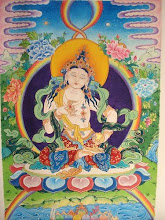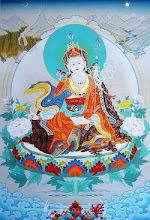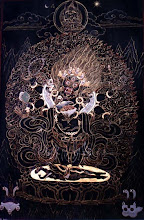 Disillusioned with a culture that worshiped tradition and feared innovation, Choephel left the stifling regimen of monastic life in 1934 in the company of Rahul Sankrityayan, an Indian scholar of Buddhism and communist activist for Indian independence. Traveling to India, Choephel stepped into a world of wonders, a land criss-crossed by trains, peopled with merchants and businessmen engaged in trade with the outside world, and united in throwing off British imperialism. Enraptured and eager to experience it all, Choephel shrugged off his monastic habits and began an inner exploration of sensual pleasure through tobacco, alcohol and women. All the while he was writing in his diary, painting, sketching, completing the first ever Tibetan translation of the Kama Sutra, publishing a pilgrim's guide to the sacred Buddhist sites of India, contributing reports on the outside world to an emigre newspaper, and beginning work on a non-religious history of Tibet.
Disillusioned with a culture that worshiped tradition and feared innovation, Choephel left the stifling regimen of monastic life in 1934 in the company of Rahul Sankrityayan, an Indian scholar of Buddhism and communist activist for Indian independence. Traveling to India, Choephel stepped into a world of wonders, a land criss-crossed by trains, peopled with merchants and businessmen engaged in trade with the outside world, and united in throwing off British imperialism. Enraptured and eager to experience it all, Choephel shrugged off his monastic habits and began an inner exploration of sensual pleasure through tobacco, alcohol and women. All the while he was writing in his diary, painting, sketching, completing the first ever Tibetan translation of the Kama Sutra, publishing a pilgrim's guide to the sacred Buddhist sites of India, contributing reports on the outside world to an emigre newspaper, and beginning work on a non-religious history of Tibet.
Arriving back in Lhasa, Choephel found his reputation had preceded him and was promptly thrown into jail, tortured, and left to rot until being released only months before the Chinese invasion of 1950. With any hope for reform crushed by the arrival of Mao's army, Choephel entered an intense period of inebriation from which he never recovered, passing away in 1951 at the age of 48.
Swiss director Schaedler works matter-of-factly, tracing the travels of his subject from his birthplace in eastern Tibet through to India and back to Lhasa, weaving together interviews with Choephel's surviving contemporaries with voice-overs describing his own journey. Anyone interested in modern Tibetan history should not miss this film, especially as it is the only document about Choephel's life currently available in English.
Director: Luc Schaedler
- DVD Release Date: September 2007
- Run Time: 97 minutes
+Review in Himal Magazine
+Critical review at Cinematical, including a reply from the director
+Angry Monk website
+Order DVD



















































